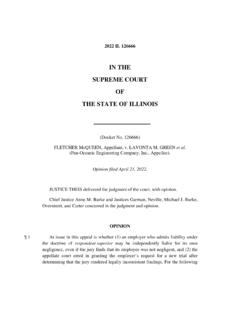Transcription of The History of Kraft Foods Inc.
1 The History of Kraft Foods Inc. All About Kraft Learn everything there is to know about Kraft : like who we are, how you can reach us and what we re doing in your community. Kraft Foods Inc. is a company with many different roots and founders, all sharing a commitment to quality, a willingness to take risks and a spirit of innovation. Among the products now sold by Kraft Foods Inc. are so many firsts and innovations that a History of the company is almost a History of the food industry. Kraft traces its History to three of the most successful food entrepreneurs of the late 19th and early 20th centuries Kraft , who started his cheese business in 1903; Post, who founded Postum Cereal company (later renamed General Foods Corporation) in 1895; and Oscar Mayer, who began his meat business in 1883.
2 The Story of Kraft The History of Kraft goes back to 1903, when, with $65 in capital, a rented wagon and a horse named Paddy, Kraft started purchasing cheese at Chicago s Water Street wholesale market and reselling it to local merchants. Within a short time, four of Kraft s brothers joined him in the business, and, in 1909, they incorporated as Kraft & Bros. Co. In 1914, Kraft and his brothers purchased their first cheese factory in Stockton, Illinois. In 1915, they began producing processed cheese in 3-1/2 and 7-3/4 ounce tins. Kraft s method of producing processed cheese was so revolutionary, in 1916 he obtained a patent for it and in 1917 the company started supplying cheese in tins to the Government for the armed forces in World War I.
3 Kraft followed up on his success with processed cheese in tins by introducing or acquiring many additional products, including processed cheese in loaves, VELVEETA Process Cheese, PHILADELPHIA Cream Cheese, MIRACLE WHIP Salad Dressing and Kraft DINNER Macaroni and Cheese. He used innovative advertising to promote his products and was a pioneer in the sponsorship of television and radio shows. Kraft Music Hall on radio and Kraft Television Theatre helped prove the effectiveness of advertising on the then-new media. The company s hands commercials, showing a pair of hands preparing recipes using Kraft products, became a symbol of the company s advertising success.
4 Aggressive sales merchandising techniques contributed further to the company s growing market share in an increasingly diverse line of products. The success of Kraft and his company was noted by Thomas McInnerney, founder of National Dairy Products Corporation. In 1930, Kraft -Phenix Cheese Corporation (as it was then called) was acquired by National Dairy Products Corporation. Kraft continued to operate as an independent subsidiary of National Dairy Products Corporation for many years, but eventually was absorbed into the operating structure of the parent company , which changed its name to Kraftco Corporation in 1969 and again to Kraft , Inc.
5 In 1976. The Story of C. W. Post In 1895, Post made his first batch of POSTUM Cereal Beverage in a little white barn in Battle Creek, Michigan. With that step he entered the brand new retail cereal industry. In 1897, he introduced POST GRAPE-NUTS Cereal, one of the first ready-to-eat cold cereals. He followed that success with a corn flakes product in 1904 which he called ELIJAH S MANNA (renamed POST TOASTIES in 1908). In 1911, Post introduced a refinement of his original product, POSTUM Instant Cereal Beverage. Post used marketing techniques that are now considered industry standards, but which were innovative for their time.
6 These included extensive advertising, coupons, free samples, product demonstrations, plant tours and recipe booklets. Post died in 1914, but Postum Cereal company continued to follow the formula for success which he had established: selling high-quality, nutritious cereal products through marketing and advertising techniques that appealed to the common man and woman. Then, in 1925, the company acquired the Jell-O company , marking the start of an aggressive acquisition effort. Over the next four years, Postum acquired over a dozen companies and expanded its product line to more than 60 products.
7 Some of the products acquired at that time included MINUTE Tapioca, BAKER S Chocolate, BAKER S Coconut, LOG CABIN Syrup, MAXWELL HOUSE Coffee and CALUMET Baking Powder. By the time Postum purchased the rights to Clarence Birdseye s new method for producing quick-frozen Foods in 1929, a change of name seemed appropriate. So the name of Birdseye s company was changed from General Foods company to Frosted Foods company and the name of the parent corporation was changed to General Foods Corporation. (The BIRDSEYE business was sold to Dean Foods company in 1993.)
8 Through the years, the management at General Foods refined and improved its product line in part through acquisitions and divestitures and, in part, through research and development. Internally-developed products included JELL-O Pudding and Pie Fillings (1936), MAXWELL HOUSE Instant Coffee (1945), TANG Flavour Crystals (1957), DREAM WHIP Topping Mix (1957) and COOL WHIP Whipped Topping (1966). In 1981, General Foods expanded into a new product category by acquiring Oscar Mayer & Co., a leader in the processed meats industry. Four years later, General Foods Corporation was acquired by Philip Morris Companies, Inc.
9 After Philip Morris acquired Kraft , Inc. in 1988, the two food subsidiaries were combined to form Kraft General Foods , Inc. in 1989. The Story of Oscar Mayer Oscar F. Mayer was a Bavarian immigrant who started his career in 1873 at the age of 14 as a butcher s boy in a Detroit meat market. By 1883 he had saved up enough money to lease a failing Chicago meat market. With the help of his brothers Gottfried and Max, he made the business such a success that the landlord refused to renew the lease when it came up for renewal in 1888. So that year Oscar Mayer and his brothers started again from scratch, this time building their own meat market just down the street from the original leased market.
10 As a result of the Mayer brothers attention to quality and customer service, their original landlord was soon out of business. Early company specialties were Old World sausages and Westphalian hams, soon followed by bacon and wieners. The company s concern for quality was so strong that in 1906, Oscar Mayer & Co. was among the first to volunteer to join the newly created federal meat inspection program. In 1919, the company made its first major expansion, with the purchase of a processing plant in Madison, Wisconsin. The plant quickly proved to be a profitable, efficient operation and eventually Madison became the corporate headquarters.
















